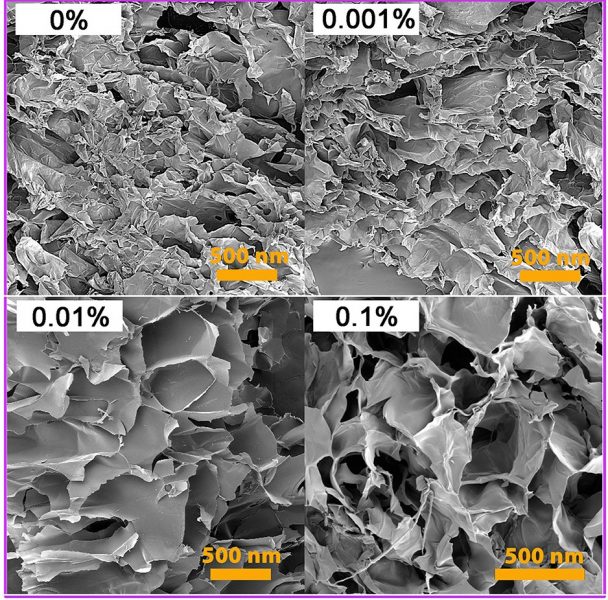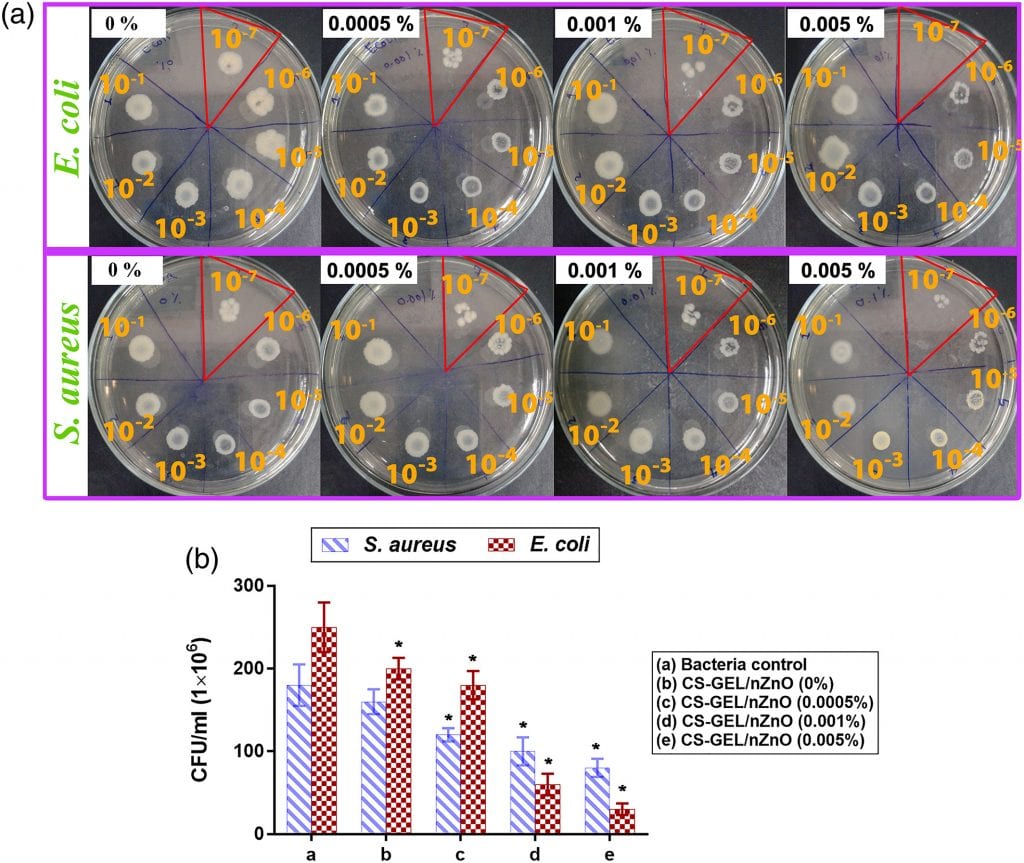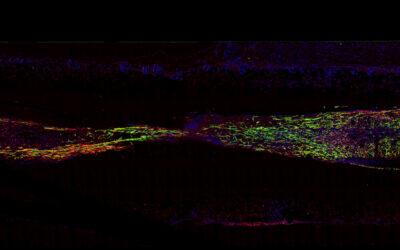The largest organ in the human body is the epidermis, or skin. Skin serves as the first line of defense for the body against infections, so naturally injuries involving the skin can have serious health implications. To treat skin wounds, tissue engineering is a promising approach that uses an engineered scaffold to repair or regenerate the injured tissue, rather than transplanting entire organs.
In their work reported in the Journal of Applied Polymer Science, Rasul Rakhshaei and colleagues prepared and characterized chitosan-gelatin/zinc oxide nanocomposite hydrogel scaffolds (CS-GEL/nZnO) for potential use in skin tissue engineering.

Scanning Electron Micrographs of the CS–GEL/nZnO at different magnifications immersed in 0, 0.001, 0.01, and 0.1% zinc nitrate solutions.
Hydrogel scaffolds serve as a temporary matrix on which cells can grow and proliferate to repair damaged tissue. Rakhshaei and colleagues sought to add components to the scaffold to deliver bioactive materials and drugs to the damaged tissue to further aid in regeneration. The scaffolds the team used combined chitosan (CS), gelatin (GEL), and zinc oxide (ZnO). CS is biocompatible, biodegradable, accelerates tissue regeneration, and has moderate antibacterial properties. GEL was incorporated as a biologically active material to encourage cell adhesion and migration. ZnO nanoparticles were included for their antibacterial effects without harming healthy cells.

Photographs showing the antibacterial activity of the prepared CS–GEL/nZnO containing different amounts of zinc oxide nanoparticles against E. coli and S. aureus using serial dilution method. The slices indicated using a red three angle show the seventh dilution step, at which the difference between samples was observable (a) and quantification of the antibacterial activity in this dilution step (b) (*p < 0.05, t test).
Rakhshaei and team evaluated the CS-GEL/nZnO scaffolds using scanning electron microscopy, transmission electron microscopy, an atomic absorption spectrometer, Fourier transform infrared spectroscopy, and X-ray diffraction. They found that the scaffolds they prepared demonstrated a high swelling ratio, controlled biodegradation, and high porosity, a feature that could be helpful in absorbing wound exudate. By incorporating the nZnO, the team was able to also confer drug deliverability to the scaffold. The ZnO nanoparticles can control the release of naproxen, a nonsteroidal anti-inflammatory drug (NSAID), to combat the inflammation that can be seen during tissue regeneration.
Unlike previous studies on the subject, the current research from Rakshaei and colleagues synthesized the nZnO in situ, resulting in higher antibacterial and lower cytotoxicity effects. This was due to effective distribution of the ZnO throughout the scaffolding. The results of this study demonstrated successful synthesis of CS-GEL/nZnO hydrogel scaffolds that are strongly recommended for use in biomedical applications, especially skin tissue engineering.

















